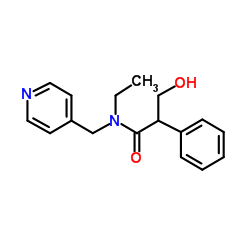Role of 5-HT3 receptors in the mechanisms of central pain syndrome.
M L Kukushkin, S I Igon'kina
Index: Bull. Exp. Biol. Med. 135(6) , 552-5, (2003)
Full Text: HTML
Abstract
Electrophysiological and behavioral studies showed that spinal 5-HT3 receptors are involved in the regulation of pain sensitivity in rats. Intrathecal administration of the 5-HT3 receptor antagonist tropine (200 microg) produced allodynia, reduced the threshold, decreased the latency, and increased the number of spikes in the late component of the nociceptive flexion reflex. Intrathecal administration of 5-HT3 receptor agonist quipazine (200 mg) abolished nociceptive flexion reflex and alleviated spinal pain syndrome produced by impairment of GABAergic inhibition in the lumbar spinal segments. Our results indicate that spinal 5-HT3 receptors are involved in the modulation of pain sensitivity: activation of these receptors inhibits nociceptive reactions, while blockade of 5-HT3 receptors potentiates the nociceptive response via modulation of excitability of GABAergic interneurons.
Related Compounds
| Structure | Name/CAS No. | Molecular Formula | Articles |
|---|---|---|---|
 |
Tropine
CAS:120-29-6 |
C8H15NO |
|
Tropine dehydrogenase: purification, some properties and an ...
1995-04-15 [Biochem. J. 307 ( Pt 2) , 603-8, (1995)] |
|
The metabolism of atropine in man.
1986-10-01 [J. Pharm. Pharmacol. 38(10) , 781-4, (1986)] |
|
Determination of nitrogen-15 isotope fractionation in tropin...
2009-12-01 [Rapid Commun. Mass Spectrom. 23(24) , 4031-7, (2009)] |
|
Effect of tropine derivatives, antimuscarinic agents, on the...
1998-10-01 [Biosci. Biotechnol. Biochem. 62(10) , 2046-8, (1998)] |
|
Molecular cloning and catalytic characterization of a recomb...
2013-03-10 [Gene 516(2) , 238-47, (2013)] |